English Bulldog and Shar Pei Mix: Bull Pei Dog Breed Information
The Bull Pei is a hybrid dog that combines the qualities of the Chinese Shar-Pei and the English Bulldog. This breed stands out with its wrinkled skin and muscular physique, drawing interest for its looks and suitability as a family pet.
The Bull Pei is versatile and can adjust to different living spaces, like apartments. However, understanding its behavior and care is critical for a good fit with its human family.
Owners need to be aware of the health issues and grooming that come with this breed’s genetics. They also need to understand their personality traits. Knowing the Bull Pei well can significantly strengthen the dog’s and its owner’s bond.
This breed offers a complex but rewarding companionship.
Key Takeaways
- The Bull Pei is a Shar-Pei and Bulldog mix.
- Suited for various homes, including apartments.
- Requires specific care and understanding.
Quick Facts
The Bull-Pei is a distinctive hybrid dog, medium in size, created from the mix of a Chinese Shar-Pei and an English Bulldog. Known for its abundant wrinkles and folds in its skin, this breed is a solid mix of its parent breeds’ characteristics. The breed is sturdy and carries a unique look, making it a popular choice among dog enthusiasts. They are ideal pets for smaller living spaces due to their manageable size and relatively low need for exercise.
These dogs are known for their loyalty and tenderness toward their families and can be pretty protective, which makes them good watchdogs. Their coat can be of various colors, such as black, brown, grey, white, and fawn, and they require regular grooming, including weekly brushing and bathing every few months. Although they have short coats, they are not hypoallergenic and might not be the best option for people with allergies.
When considering a Bull-Pei, it’s wise to research any potential health concerns that could be passed down from their English Bulldog and Shar-Pei ancestors. It is essential to find a respected breeder who conducts thorough health screenings on their dogs. This helps ensure that you bring home a healthy and happy pet.
Bull Pei Dog Breed Pictures
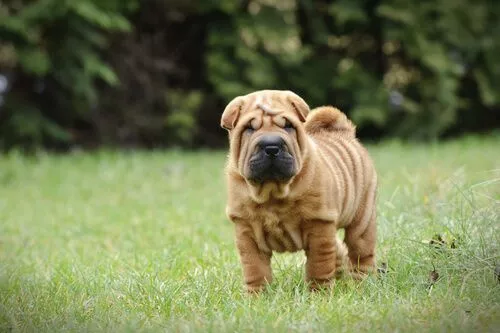
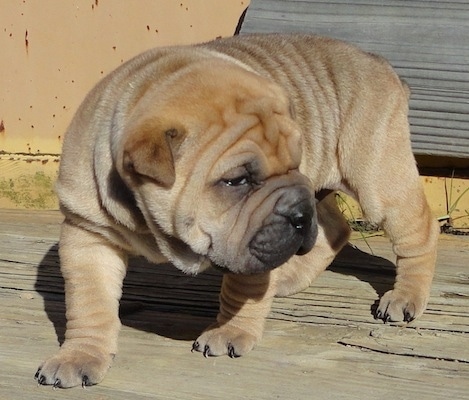
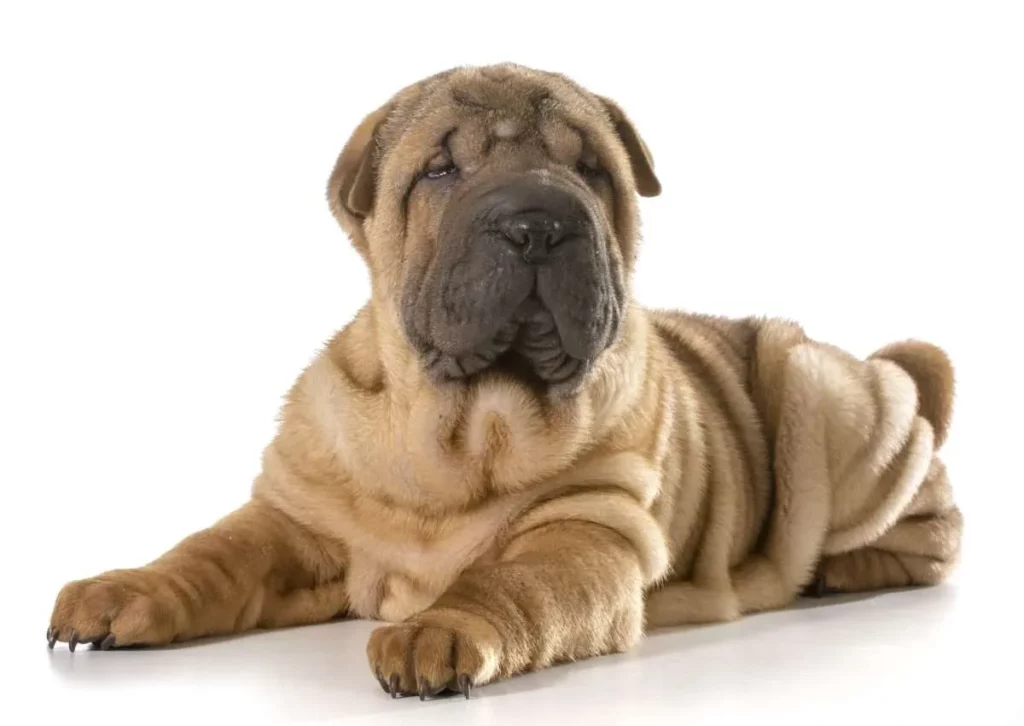
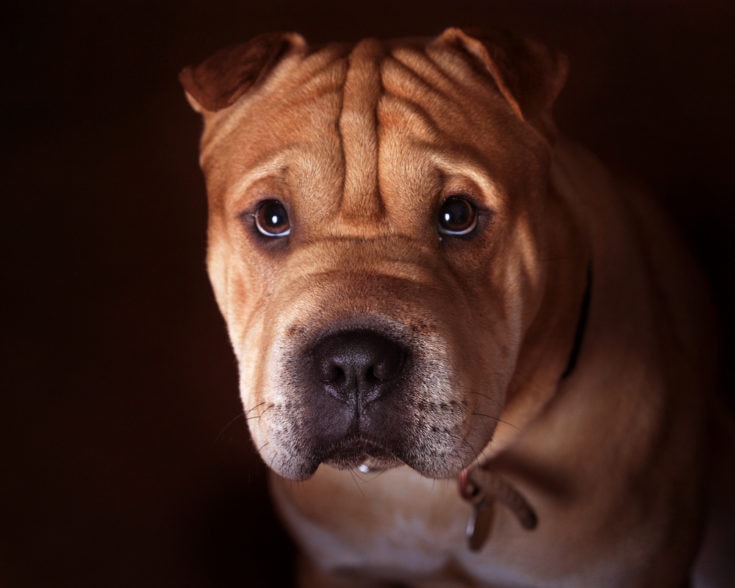
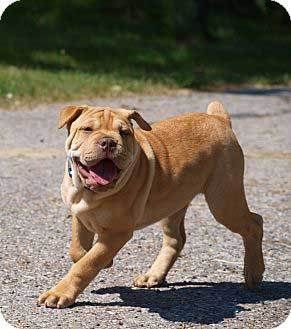
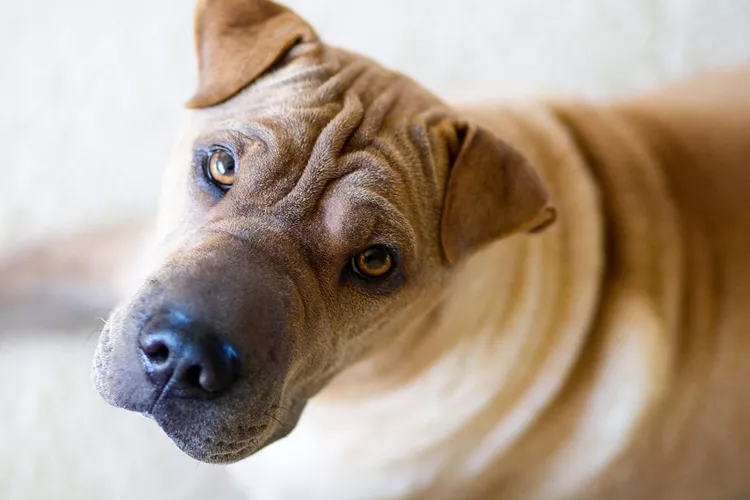
Overview of Bull-Pei
The Bull-Pei is a unique crossbreed that inherits its distinctive look and friendly nature from its parents, the Chinese Shar-Pei and the English Bulldog. This breed is medium-sized and has a charming, wrinkled appearance that sets it apart. They’re well-suited for apartment dwellers due to their calm demeanor and moderate exercise needs, making them a good fit for urban living.
When considering a new pet, it’s worth checking local shelters or breed-specific rescues for Bull-Peis needing a loving home. Adopting a dog allows you to evaluate their personality in a home environment. The Bull-Pei is known for being loyal and caring with family members, often acting as a vigilant guard dog. Their friendly disposition and strong bonds with family make them a fantastic pet choice.
Supporting breed standards through groups like the Designer Dogs Kennel Club is essential for promoting ethical breeding.
Breed’s Key Traits
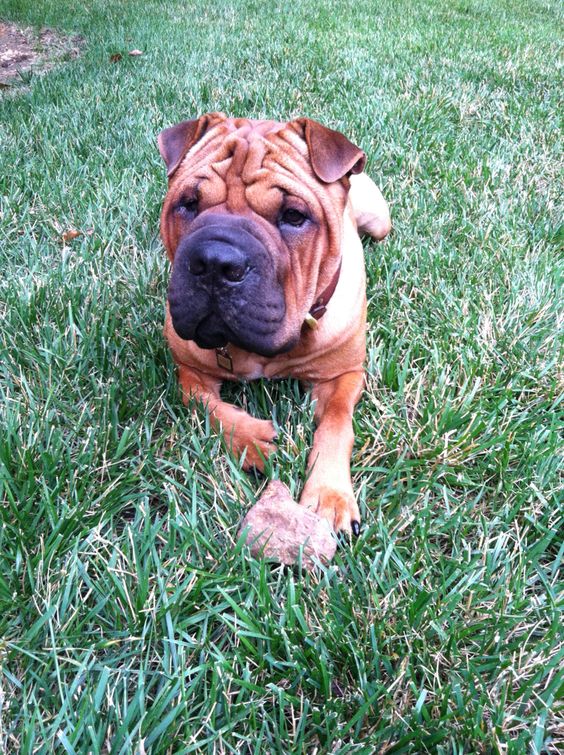
Understanding the Bull-Pei breed involves knowing their unique physical and behavioral qualities. These dogs come from the Chinese Shar-Pei and the English Bulldog, giving them a sturdy and muscular look without much exercise. They fit well in homes that aren’t overly active.
Proper training and getting along with others are essential for Bull-Peis, mainly because they tend to be protective. Thanks to their short coats, they’re not high-maintenance in grooming. However, those interested in this breed should know about common health issues in its parent breeds.
Here’s a quick rundown of the Bull-Pei’s main characteristics:
| Trait | Description | Consideration |
|---|---|---|
| Size | Medium-sized | Good for smaller homes |
| Energy Level | Not too high | Low exercise needs |
| Coat | Short, rough | Simple grooming |
| Temperament | Guarding, family-friendly | Training is a must |
| Health | Can inherit issues | Regular vet visits are wise |
People thinking about bringing a Bull-Pei into their lives must consider these traits to ensure they’re ready for this type of dog.
Breed Origin Summary
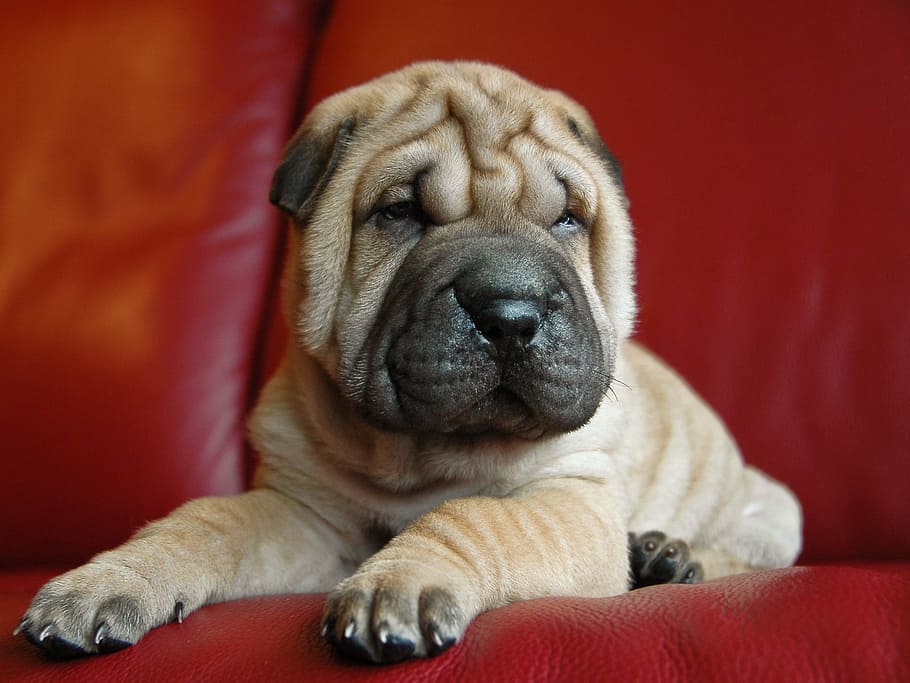
The Bull Pei is a designer dog breed that emerges from the cross between the Chinese Shar-Pei and the English Bulldog. This mix creates a dog with distinctive features and personality traits.
The heritage of the Bull Pei combines the wrinkled charm of the Shar-Pei with the stout nobility of the Bulldog. The Chinese Shar-Pei and the English Bulldog come together to form the Bull Pei. This crossbreed takes on the best of both worlds, merging the loose, wrinkled skin of the Shar-Pei with the muscular build of the Bulldog. This combination creates a visually striking dog with a warm and loyal personality.
The emergence of the Bull Pei as a popular hybrid among dog enthusiasts. As mixed-breed dogs gained popularity, the Bull Pei started to stand out as a favored choice. This breed has garnered attention for its unique look and amiable nature. Those who appreciate the Shar-Pei and Bulldog often find the Bull Pei the perfect blend.
The specific genetic characteristics that shape the Bull Pei’s appearance and temperament. The physical and behavioral traits of the Bull Pei are a direct result of its genetic makeup. These dogs often inherit the Shar-Pei’s distinct muzzle, skin folds, and the Bulldog’s powerful physique. Their temperament tends to balance Shar-Pei’s independence and the Bulldog’s pleasant disposition, making them a well-rounded companion.
Ancestral Breed Blend
Exploring the genetic makeup of the Bull Pei, we find a blend of features from its English Bulldog and Chinese Shar-Pei ancestors. This mix gives the Bull Pei a set of unique traits, such as the Bulldog’s sturdy build and breathing issues, the Shar-Pei’s wrinkled skin, and a tendency for specific skin conditions.
As a member of the International Designer Canine Registry and acknowledged by the American Canine Hybrid Dog Registry, the Bull Pei showcases the intricate outcomes of crossbreeding to achieve particular characteristics.
It’s important to note that, although it has some assertive traits, the American Pit Bull Terrier is not part of the Bull Pei’s heritage.
Historical Development
The Bull-Pei is a modern hybrid dog that combines the traits of the English Bulldog with the Chinese Shar-Pei. These dogs come from a background of utility and companionship, with ancestors used in dog fighting and as guard dogs.
Recognized by organizations specializing in mixed breeds, the Bull-Pei can participate in dog-related events. However, because of their hybrid genetics, they often face health issues, including problems with breathing and skin, which means they need careful medical attention and a well-managed diet.
The Bull-Pei typically forms strong bonds with its owners and tends to be friendly if given the proper training from a young age.
Unique Genetic Traits
The Bull-Pei, a crossbreed of the English Bulldog and Chinese Shar-Pei, displays a range of distinctive traits from its parent breeds. These characteristics are evident in its appearance, health, and behavior.
The breed is medium in size and is mainly known for its deep wrinkles, a trait inherited from the Shar-Pei. To keep their skin in good condition, these dogs need careful grooming with quality products.
Owners will find the Bull-Pei’s personality to be trainable and friendly, making them great family companions. It’s essential for those looking to adopt a Bull-Pei to work with trustworthy breeders. This ensures the dog’s health and behavior are well-matched to a home environment, promoting a happy life for the pet and its human family.
Breed’s Average Weight Range
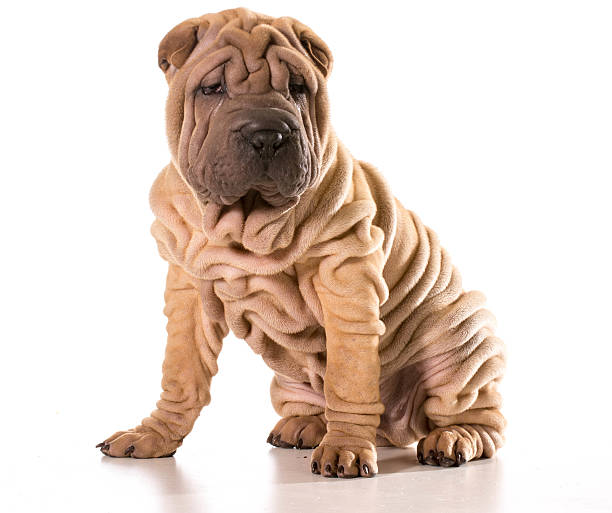
Maintaining a healthy weight is vital for the well-being of the Bull Pei, a crossbreed between the English Bulldog and the Chinese Shar-Pei. Genetic factors and the mix of breeds play a significant role in determining their size.
Proper diet and exercise are essential for keeping them at a weight that’s good for their health. As Bull Peis grow from young puppies to adults, their weight changes, and it’s essential to track these changes to ensure they’re developing as they should.
Understanding these aspects is critical to the health and happiness of a Bull Pei.
Weight Variability Factors
To understand the weight differences in Bull-Peis, it’s crucial to look at the genetic makeup they inherit from the English Bulldog and the Shar-Pei. These parent breeds significantly impact the possible size of their Bull-Pei offspring. The weight of the Bull-Pei can vary widely, but typically, they fall into the medium-sized dog category.
To estimate the weight of a Bull-Pei, examining the weight ranges of the English Bulldog and Shar-Pei is necessary. The mix of genetic traits from the English Bulldog and Shar-Pei plays a significant role in determining the size of their Bull-Pei hybrid. These dogs may need more room due to their size and weight, which is influenced by their genetics.
When choosing a dog, it’s essential to consider the space they might need and the genetic factors that affect their weight.
Healthy Weight Maintenance
For Bull-Pei to stay within the healthy weight range of 40-60 pounds, a structured approach to their diet and exercise is essential.
These dogs need plenty of physical activity to avoid becoming overweight. Aim for energetic daily exercise lasting between 30 and 60 minutes to meet their needs.
Monitoring their food portions closely is also essential, ensuring they fit their size, build, and activity level appropriately. Your vet can help set the correct weight goals for your dog.
To prevent health problems linked to excess weight, it’s critical to control their diet and ensure they get regular exercise. This will help maintain their weight within the desired range.
Adult Weight Expectations
Adult Bull-Peis generally weigh between 40 and 60 pounds, depending on their genetics and health. These dogs are a mix of the English Bulldog and the Chinese Shar-Pei, and their weight reflects this heritage. To prevent weight-related health issues, owners should provide their Bull-Pei with a proper diet and exercise routine.
These dogs need regular activity to stay healthy but don’t need as much as other breeds. It is crucial to balance their low activity levels with enough exercise to keep them within a healthy weight range. Consistent vet check-ups can help manage their weight and health effectively.
Owners of Bull-Peis should ensure their pets get enough exercise to avoid becoming overweight. A healthy diet is also crucial to maintaining their well-being. Since they are less active than other breeds, engaging them in regular physical activities is vital. This helps them stay within the ideal weight range and promotes overall health. Regular check-ins with a vet can help tailor their care and keep the Bull-Pei in top condition.
Growth Phase Considerations
Monitoring Bull-Pei’s weight gain is essential to foster healthy development and sidestep potential health issues during their early life stages. A Bull-Pei pup’s weight should be tracked consistently, especially from the start until they’re done growing.
They need a nutritious diet to stay within the breed’s standard weight range and avoid becoming overweight or placing too much pressure on their growing bones. Understanding their weight is also critical for setting up exercise routines and living arrangements that promote their well-being. Moreover, it’s practical to pick out gear that fits them comfortably.
Weight Impact on Health
Maintaining a healthy weight is crucial for a Bull-Pei’s well-being, with the ideal range being 40 to 60 pounds. If a Bull-Pei weighs more than this, it could face increased joint stress and reduced mobility, leading to lower activity levels.
Conversely, a Bull-Pei weighing too little might struggle with poor nutrition or other health issues. Owners should closely monitor their dog’s weight to ensure it’s within the healthy range.
A balanced diet and regular exercise are vital to keeping a Bull-Pei at a healthy weight, strongly indicating their overall health and potential lifespan.
Temperament Traits
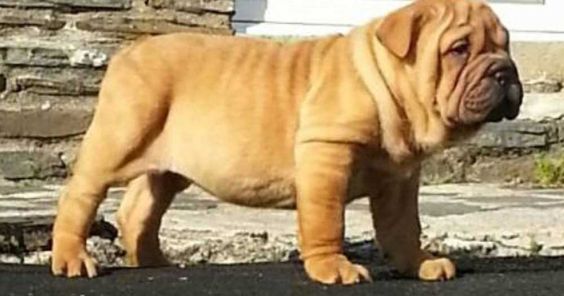
The bullpei, a mixed breed dog, has a multifaceted personality shaped by genetics and upbringing. When considering their temperament, here are some key attributes to keep in mind:
Affection Level is a significant trait that shapes how Bull Pei’s bond with their families and behave around other animals. Their comfort in showing love impacts their relationships.
Socialization Needs are critical for this breed. Introducing them to different people, animals, and situations early on helps prevent aggressive tendencies and supports their ability to adjust to various environments.
Their Stubbornness can be a challenge. This trait requires owners to be firm and persistent with training to foster obedience and respectful behavior.
To develop a harmonious relationship with a Bull Pei, these characteristics must be understood. Proper care and training can bring out the best in these dogs, making them loving and loyal companions.
Loyal Companion Nature
Known for their unwavering dedication, Bull-Peis are inherently affectionate to their families, thriving under consistent training and social exposure, positively shaping their protective nature. These dogs tend to take on leadership roles, requiring firm yet supportive training to channel their loyalty effectively. Introducing them to various people and animals early on is essential to nurture their friendly and devoted character. This ensures that Bull-Peis become loving pets, contributing positively to family life as they grow.
Their protective trait makes them alert watchdogs, especially when someone is at home. They are social creatures, forming strong bonds with humans and other pets, including dogs and cats. This makes them excellent companions that bring happiness and camaraderie to any home.
The Bull-Pei is truly hard to match in terms of affection and companionship.
Playful Vs. Calm Balance
Bull-Peis strikes a perfect balance between being lively and relaxed. Their personality is ideal for both action-packed games and peaceful downtime. They’re versatile dogs, happy to play indoors or enjoy a good run outside. This breed is excellent for bonding through play, keeping them mentally stimulated.
At the same time, Bull-Peis can be pretty mellow, fitting right into a calm setting. Practical training is critical to keeping this balance, helping them behave in a way that suits their flexible nature.
Socialization Needs
To ensure a well-behaved Bull-Pei, it’s critical to start socialization early. This breed benefits from experiencing many settings and creatures from a young age. This process helps prevent the dog from developing aggressive or fearful reactions later in life. Training sessions that include a variety of scenarios can allow a Bull-Pei to become more adaptable and self-assured.
Regular interactions with people and other animals are vital to preventing Bull-Peis from becoming overly territorial or protective. These efforts lead to a happy dog in social situations and becoming a friendly and well-adjusted pet. The goal is to shape a Bull-Pei into a companionable dog with a steady disposition.
Stubbornness Challenges
Bull-Peis are known for their strong-willed nature; a trait passed down from their Shar-Pei ancestors. To help these dogs succeed in training, owners must be consistent and use a structured approach. They must repeat the same commands and rewards to help their Bull-Pei understand and follow directions.
In apartment settings, these dogs must learn how to coexist peacefully in a smaller space. Without the proper training, Bull-Peis might struggle to adapt to apartment living. Their Stubbornness can become a problem if they’re not taught how to behave indoors. Owners must recognize and work with their dog’s temperament to prevent issues.
Using firm but fair training techniques can help Bull-Peis become well-adjusted pets in a house or apartment.
Affection Level
Bull-Peis are known for their warm and loving nature, often showing affection to family members with excited tail wags and a desire for cuddles. These dogs display a range of loving gestures that tug at the heart, though their level of outward affection can vary due to their unique genetic makeup. While some Bull-Peis might not be as outwardly affectionate as other dogs, they are still very attuned to their owner’s feelings and may show their bond through more subtle signs of loyalty and protection.
Early socialization and consistent training are essential for Bull-Peis, who want to be the alpha or have an independent streak. These practices help them become the loving companions they have the potential to be, even if they naturally show affection in different ways.
Common Health Concerns
Owners of Bull Peis need to pay close attention to their pet’s health due to possible inherited conditions. Proactive health monitoring and regular vet check-ups are crucial for this breed.
Here’s what’s needed to keep them healthy:
Owners should regularly check for genetic diseases to catch and treat them early. Taking care of their unique skin folds is also essential; regular cleaning can prevent skin issues.
Lastly, ensuring your Bull Pei sees the vet often is critical to quickly dealing with new health problems.
Hereditary Health Issues
Bull Peis are prone to respiratory and skin issues stemming from the genetics of their bulldog and shar-pei ancestors. Regular vet visits and a well-planned diet are essential to help manage these inherited health conditions.
While small dog breeds might have health vulnerabilities, more giant breeds like Bull Peis also have genetic predispositions that need attention. Ethical breeding is critical in reducing such risks, with breeders selecting mates carefully to improve the breed’s health.
Owners need to be aware of the potential health problems with Bull Peis. Attentive care can help these dogs live a healthier, happier life despite their genetic challenges.
Skin Condition Management
Caring for Bull Peis involves paying close attention to their skin health, as they can be prone to dermatological issues. Regularly checking their skin for redness, irritation, or dryness is critical to catching any problems early. Keeping their skin clean, especially in areas where skin folds can trap moisture, helps prevent bacterial or fungal growth. If a skin problem isn’t easily identified, it’s time to seek help from a vet specializing in skin conditions. They can pinpoint the cause and tailor a treatment plan.
Proper nutrition is vital in keeping your Bull Pei’s skin healthy. A diet rich in essential nutrients and omega-3 fatty acids can support skin health. It’s also wise to avoid anything that you know your dog reacts to because steering clear of allergens can help prevent allergic skin reactions. Since Bull Peis can be sensitive despite being adaptable, it’s essential to be proactive in their skin care.
Routine Veterinary Visits
To keep your Bull Pei healthy and thriving, you must take them for regular vet check-ups every year. These visits help spot common health issues early on and keep their vaccinations and other preventive treatments current.
When you visit the vet, they should check your dog’s breathing due to their flat face, which can cause problems. Skin issues like allergies and infections also need to be looked out for.
It’s vital to keep your Bull Pei active and at a healthy weight to avoid obesity, a risk for less active breeds. Your vet can advise your dog on the right amount of exercise and diet.
If you notice any changes in behavior or signs of stress, talk to your vet immediately. They can give you tips on managing these issues and keeping your dog happy and well-adjusted.
Grooming Essentials
Proper care for a Bull Pei’s skin and coat is essential to its overall health. The following practices should be incorporated into their grooming routine.
Regular brushing once a week is critical in managing the Bull Pei’s shedding and helps keep their skin healthy by spreading the skin’s natural oils. This keeps their coat smooth and shiny.
Bathing your Bull Pei should be done every two months unless they get especially dirty or smelly. Using a gentle, hypoallergenic shampoo will help prevent any skin issues.
Regularly checking for fleas, ticks, and other pests is vital. Keeping their nails trimmed and ears clean will help avoid infections and discomfort.
These steps go a long way in ensuring your Bull Pei stays happy and healthy.
Brushing Frequency
Aim for a once-a-week brushing routine to keep your Bull Pei looking sharp and comfortable. This helps control the shedding and stops their coat from tangling. Regular grooming is vital to keeping your dog’s coat clean and free from dead hair.
For the skin folds on their face, a gentle brush prevents dirt build-up and keeps skin issues at bay.
Despite the Bull Pei’s reputation for being a low-maintenance breed, their shedding can concern apartment dwellers. However, sticking to a grooming schedule reduces hair fallout, making for a tidy home and a happy, well-cared-for pet.
Bathing Tips
Taking care of your bullpei includes regular baths with a dog-specific shampoo to keep their skin and coat healthy. Bathing helps remove dirt and can prevent skin problems.
It’s important to gently clean their ears with a vet-recommended solution to protect them from ear infections, which small dogs like Bull Peis can be prone to.
Dental care is also necessary, such as using toothpaste for dogs to fend off gum disease. Trimming their nails with care is essential to comfort.
After a bath, ensure your Bull Pei is completely dry to prevent skin irritation or rancid smells. Although Bull Peis are okay with indoor living, they shouldn’t be left alone too long after a bath to keep them safe.
Coat Health Maintenance
Maintaining a healthy coat for the Bull Pei involves regular brushing to prevent shedding and mats from forming. Brushing your dog’s coat at least weekly with tools for short-haired dogs would be best.
The Bull Pei, which enjoys being around people and fits well in smaller living spaces like apartments, thrives with a steady grooming routine. Bathing should be done every few months unless the Bull Pei gets especially dirty or smells.
The wrinkles on their face need cleaning every week to avoid skin issues. If your Bull Pei has skin problems or allergies, a vet-recommended medicated shampoo can be vital for keeping their skin healthy.
A careful and consistent grooming routine is crucial for the health of your Bull Pei’s coat and their overall happiness.
Nail Care Routine
Maintaining the nails of a Bull Pei is crucial for its well-being and should be done regularly to avoid discomfort and mobility issues. Keeping the nails at an appropriate length benefits the dog’s health. It helps prevent scratches on floors and furniture, which is especially important in smaller living quarters like apartments.
It’s advised to use pet nail clippers designed for dogs to reduce the chance of injuring the pet. Getting your Bull Pei used to nail trimming early can help ease its nervousness, making the experience better for both the pet and the owner. It’s essential to cut carefully to steer clear of the quick, which can cause bleeding and discomfort.
An alternative to clippers is a nail grinder, which can smooth out the nails more gently, helping your Bull Pei to be well-mannered around others in communal areas.
Ear Cleaning Guide
Keeping your Bull Pei’s ears clean is essential for their health and helps prevent ear infections. These dogs may be patient with kids, but when it comes to ear cleaning, they need a gentle touch to avoid stress. A stressed dog can act out, so it’s best to clean their ears in a place where they feel safe.
Move carefully when cleaning inside their ears and avoid any harsh scolding, as this can make them more anxious. Keeping your Bull Pei in a relaxed indoor environment can also help prevent ear issues.
When you care for their ears regularly, you’re not just looking after their health – you’re building a trusting relationship with your dog.
Dietary Requirements
Caring for the nutritional health of Bull Pei involves essential considerations to support their well-being and lifespan.
A balanced diet, combining proteins, carbohydrates, fats, and essential vitamins and minerals, is critical for a Bull Pei.
Adjusting meal portions based on the dog’s age, size, and energy levels is vital to avoid weight issues.
Recognizing and managing food allergies is crucial for a Bull Pei’s digestive well-being and overall health.
Nutritional Needs
Catering to the specific dietary needs of a Bull Pei is vital for their health and vitality at all ages. During their puppy phase, these dogs need plenty of proteins and fats to support their rapid growth and development.
As adults, especially the more active ones, Bull Peis benefit from a diet that meets their energy requirements.
Mature Bull Peis face different challenges, such as maintaining joint health and a healthy weight, which means their nutrition must be adapted accordingly.
Dog owners should take the time to talk with vets to create a personalized diet plan for their Bull Pei, considering any health concerns or allergies.
Feeding Frequency
Caring for Bull Peis’ dietary needs requires establishing a consistent feeding routine. Adult Bull Peis thrives on two meals daily to maintain stable energy levels and prevent overeating. On the other hand, six to eight-week-old puppies need three to four meals daily due to their rapid growth and higher energy needs.
To ensure proper nutrition, it is essential to closely monitor their food intake and adjust as needed based on their activity level, weight changes, and overall health. Consulting with a veterinarian can help determine the appropriate meal portions and schedule to keep your Bull Pei’s diet on track.
Allergies and Sensitivities
Bull Peis can sometimes have bad reactions to certain foods, leading to problems like an upset stomach, itchy skin, or trouble breathing. These issues are often caused by things like milk, eggs, nuts, wheat, and some food additives the dog might be allergic to or sensitive to.
When it comes to the American Bull Pei, a breed that can live happily in an apartment but has a lot of energy, it’s essential to feed them a diet that doesn’t have these allergens. This will help them stay healthy. Since Bull Peis are part of the family, we must be careful about what we feed them to avoid allergic reactions. This might mean trying a special elimination diet to figure out what they can’t eat, reading food labels very carefully, and talking to a vet to ensure their food meets their health needs.
Allergies in pets are severe and can affect their quality of life. A healthy diet is vital to preventing these issues. It’s also a good idea to watch for any changes in your Bull Pei’s health and act quickly if you notice anything unusual. Consulting a vet can help you understand what’s best for your dog’s unique needs.
